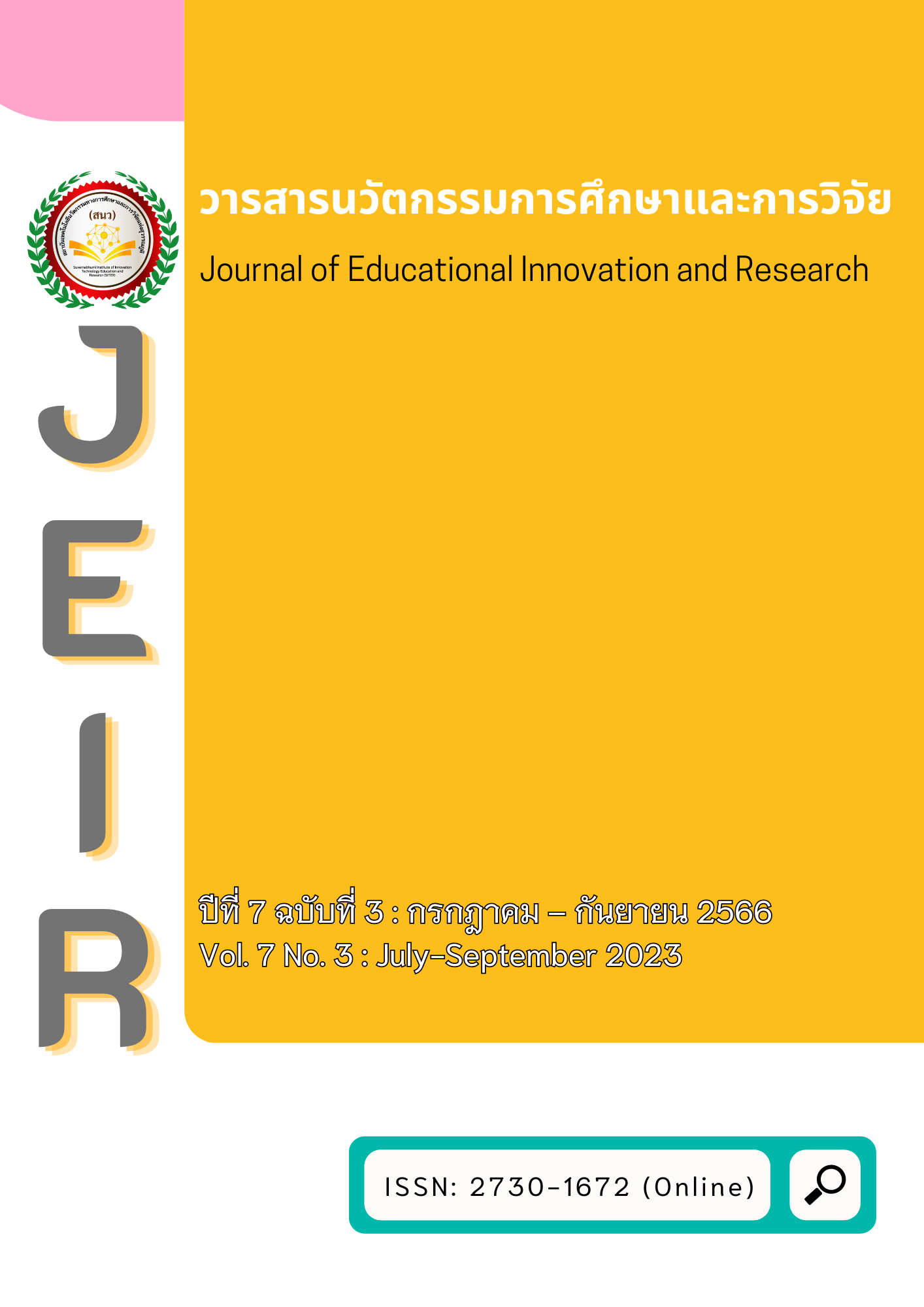Business Model Innovation as Response to Sustainability: Non-Profit Arts Organization
Main Article Content
Abstract
This study aims to explore and analyze the key factors with strong impacts on the sustainable development of non-profit art organizations (NPAO) The sustainable development of the world's non-profit art institutions is related to the preservation and inheritance of the heritage of human civilization. Samples include several art institutions and non-profit art organizations in the United States, France, and China.
The research design used mixed-research methodology with qualitative approach as the leading one supported by quantitative approach of descriptive statistics. The research target are nonprofit art organization (NPAO). For this study, data were collected from art institutions such as Nature and the Arts Organization (USA), IMAJ-UNESCO Art Center (France),CGK-Contemporary Art Gallery Kunming, etc. Semi-structured interviews and revenue records of key employees of three representative arts organizations.
Several key findings highlight business model innovation and the direct and indirect benefits of business external partners, Value innovation, nonprofit art organization boundary collaboration is key to revenue and sustainability, and value identification also influences innovation and revenue generation. This study reinforces our knowledge of the economics of non-profit arts organizations. I believe that the sustainability of non-profit arts organizations needs to be combined with their own practices and cultural project innovations. Finally, I make some recommendations that organizational and technological innovation and value creation innovation can improve economic, market, and social performance, which will facilitate the practice and sustainable development of future non-profit arts organizations.
Article Details

This work is licensed under a Creative Commons Attribution-NonCommercial-NoDerivatives 4.0 International License.
References
Agarwall, S., Erramilli, K., & Dev, C.H. (2003). Market positioning and performance of service companies: the role of innovation. Journal of Service Marketing, 17(1), 68-82.
Argyris, C., & Schon, D. (1978). Organizational Learning: A Theoretical Perspective on Action. Reading, Massachusetts: Addison Wesley.
Bakhshi, H. & Throsby, D. (2009). Innovation in Arts and Cultural Organizations: A Mid-Term Study. London: Nesta.
Baumol,W. J. & Bowen, W. G. (1966). Performing arts. Economic hardship. New York: Twentieth Century Fund.
Benham, F. (1998). The Contradiction of De'se'tatization: a non-profit art organization in France. In P.B. Boorsma, A. Van Hemel, & N. Van der Wielen (Eds.), Privatization and Culture. Dordrecht: Creweville.
Bertschek, I. & Entorf, H. (1996). Nonparametric estimates of the Schumpeterian link between innovation and firm size: evidence from Belgium, France and Germany. Journal of Empirical Economics, 21(3), 401–426.
Burton, C.& Scott,C. (2003).Nonprofit Arts Organizations: Challenges of the 21stCentury. International Journal of Arts Management, 5(2), 56-68.
Caladarci, T., & Cobb, C. D. (1996). Extracurricular participation of high school students, school size, achievement, and self-esteem:a national perspective. Journal of Rural Education Research,12(2), 92–103.
Camarero, C.& Garrido, M. J. (2008). The role of innovation in the relationship between market orientation and performance in cultural organizations. European Journal of Innovation Management, 11(3), 413-434.
Camiso'n, C., Lapiedra,R., Segarra, M. & Boronat, M. (2009). A meta-analysis of innovation and organizational scale. Organizational Research, 25(3), 331–361.
Cohen, W.M. & Klepper, S. (1996). Company Size and Re-emergence of R&D. Economic Journal, 106, 925-951.
Gainer, B.& Padanyi, P. (2005). The Relationship Between Market-Oriented Activities and Market-Oriented Cultures: Implications for Market-Oriented Development of Nonprofit Service Organizations. Journal of Business Research, 58, 854-862.
Heilbrun,J., & Gray, C.M. (1993). The Economics of Arts and Culture: An American Perspective. Cambridge: Cambridge University Press.
Hult, T., Hurley, R. & Knight, G. (2004). Innovative: its predecessor and impact on business performance. Industrial Marketing Management, 32, 429–438.
Kamien, M. I.& Schwarz, N. L. (1982). Market structure and innovation. Cambridge: Cambridge University Press.
Kawashima, N. (1999). Privatize the services of a non-profit arts organization for local authorities in the UK. New managerialism in action? JMP, 1(2), 157–178.
Kirchner, T. A., Markowski, E. P.& Ford, J.B. (2007). The relationship between government support, marketing activities, and the financial situation of nonprofit performing arts organizations. International Nonprofit and Voluntary Sector Marketing Journal, 12 , 95-116.
McDonald, R. (2007). A Nonprofit Innovation Survey: The Role of Organizational Mission. Non-Profit and Voluntary Sector Quarterly, 36(2), 256-281.
McNichol, T. (2005). Creative Marketing Strategies for Small, Nonprofit Arts Organizations: Proximity and Innovation. International Nonprofit and Voluntary Sector Marketing Journal, 10,239-247.
Mottner, S.& Ford, J. (2004). Measuring the Performance of Nonprofit Marketing Strategies: A Case Study of a Nonprofit Arts Organization Store. Journal of Business Research, 58(6),829-850.
Olson, J., Belohlav, J. & Boyer, K. (2005). Operational, Economic, and Mission Elements in Nonprofit Organizations: The Case of the Chicago Symphony Orchestra. Journal of Operations Management, 23(2), 125–142.
Pinkas, A. L. (1998). Tanglewood: The Clash Between Tradition and Change. Boston: Northeastern University Press.
Scheff, J.& Kotler,P. (1996). Artistic Crisis: Marketing Responses. California Management Review, 39(1), 28-52.
Schuster, J.M. (1998). Beyond Privatization: A Mix of Nonprofit Arts Organizations and Architectural Heritage. In P.B. Boorsma, A. Van Hemel, & N. Van der Wielen (Eds.), Privatization and Culture. Dordrecht: Creweville.
Stock, G. N., Greis, N. P. & Fischer, W. A. (2002). Enterprise scale and dynamic technological innovation. Technological Innovation, 22, 537–549.
Voss, G., Montoya-Weiss, M. & Voss, Z. (2006). Align innovation with the market characteristics of the nonprofit professional theatre industry. Journal of Marketing Research, 43(1), 296-302.


